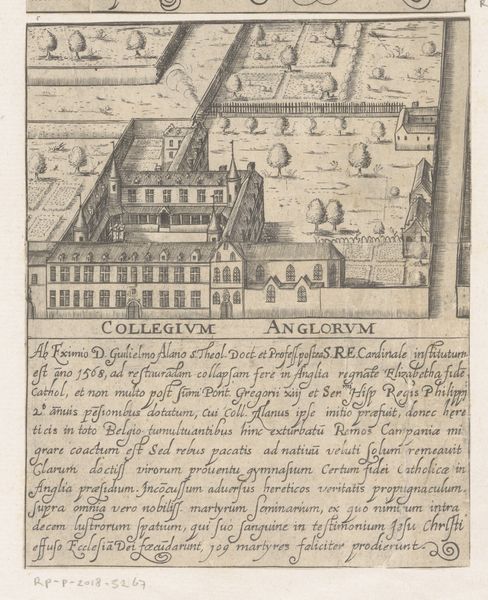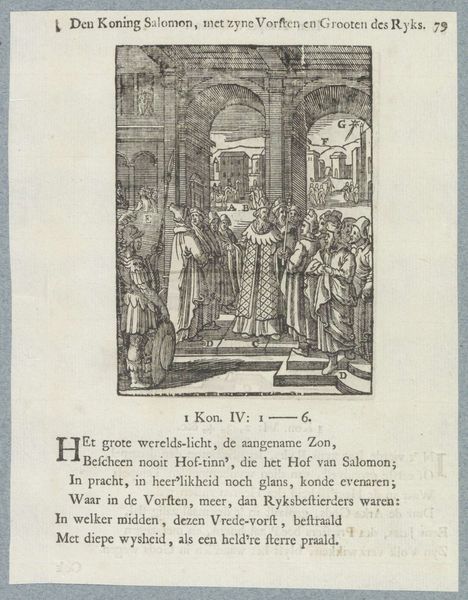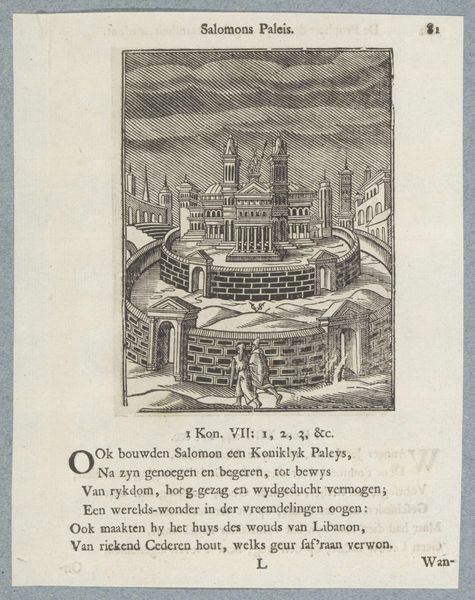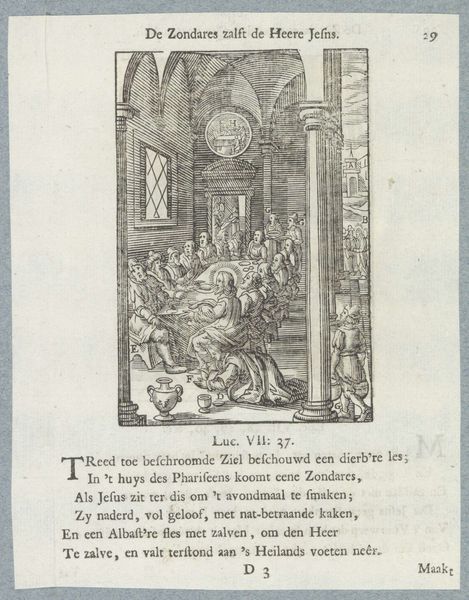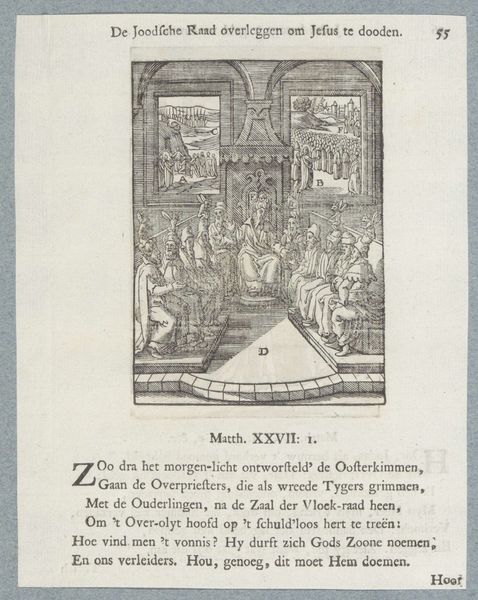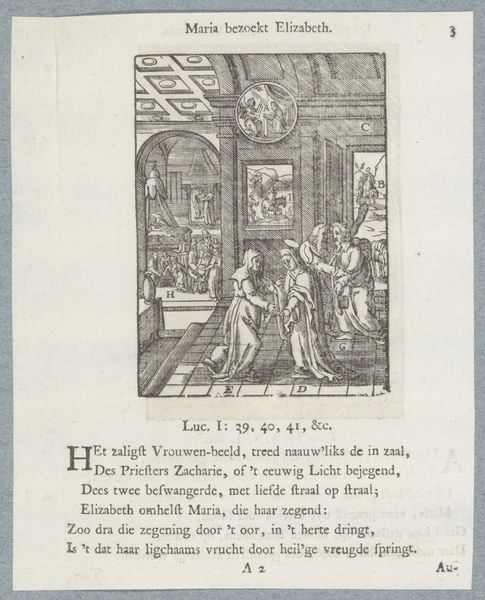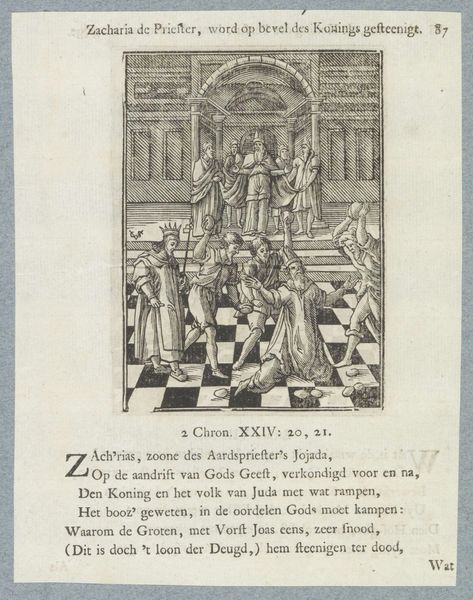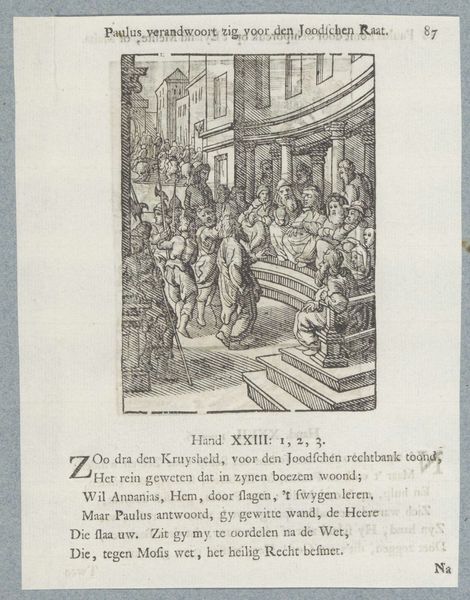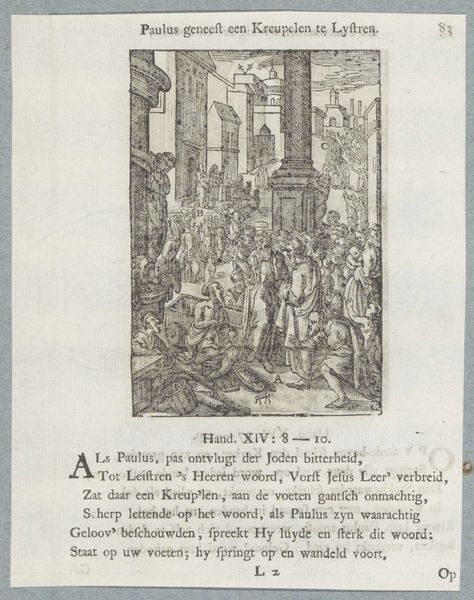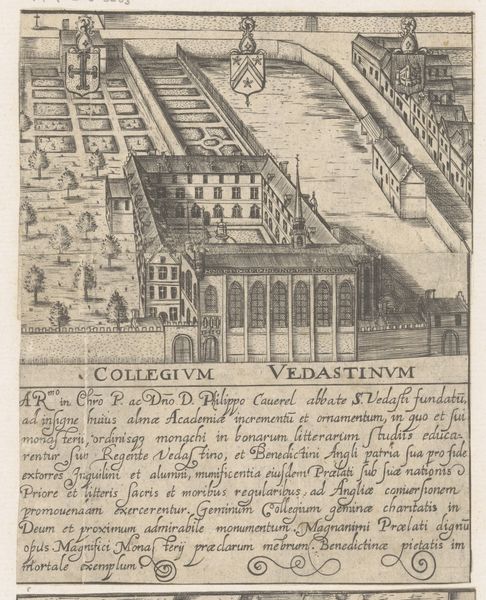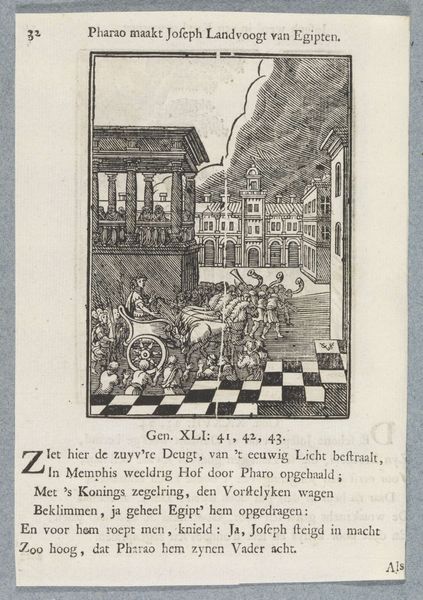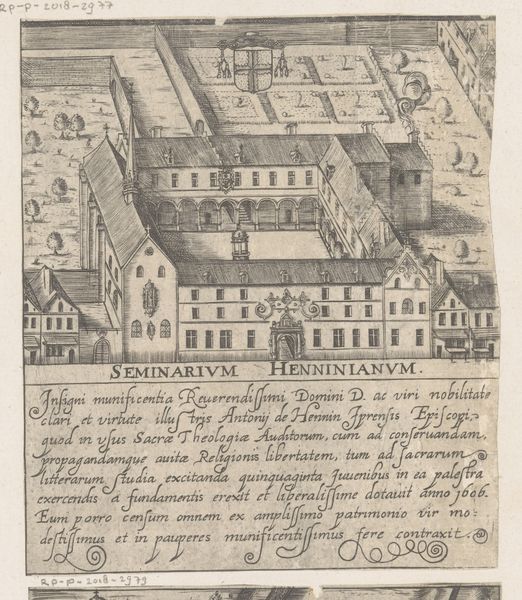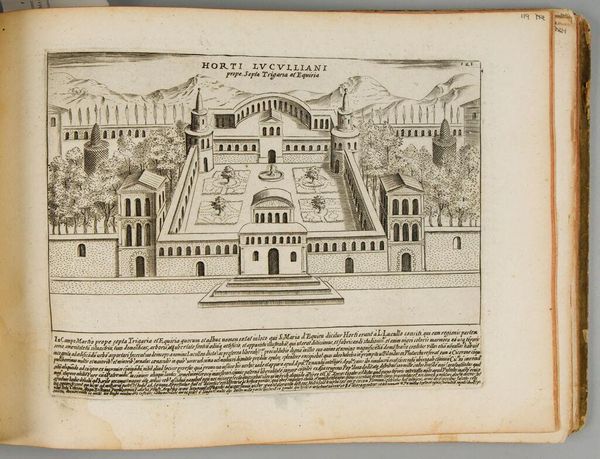
drawing, print, engraving, architecture
#
drawing
#
aged paper
#
page thumbnail
#
narrative-art
# print
#
sketch book
#
traditional media
#
landscape
#
perspective
#
figuration
#
personal sketchbook
#
sketchwork
#
journal
#
line
#
sketchbook drawing
#
cityscape
#
storyboard and sketchbook work
#
northern-renaissance
#
sketchbook art
#
engraving
#
architecture
Dimensions: height 103 mm, width 75 mm, height 171 mm, width 132 mm
Copyright: Rijks Museum: Open Domain
Editor: So, this engraving, "Tempel van Salomo" or Temple of Solomon by Christoffel van (II) Sichem, dates to sometime between 1629 and 1740. It feels incredibly precise, almost architectural in its detail. I’m curious, what stands out to you when you look at this piece? Curator: I immediately see an intricate display of labor and material culture. The engraving technique itself speaks volumes about the craft involved – the painstaking work of carving those lines into a metal plate. We’re not just seeing an image of a temple, but a product of skilled labor. Consider how the printed image becomes accessible and replicable through this technology. Editor: That's a perspective I hadn't fully considered. It's easy to overlook the process in favor of the subject matter. Curator: Exactly. The materials, from the paper itself to the ink, are key components. Furthermore, look at the scale of the figures within the temple; their representation reflects the hierarchical social structures of the time. How are they placed, what gestures are they making, and what kind of clothing are they wearing? These are indicative of very real socioeconomic and political values of the 17th century, embedded within this depiction. Editor: I see what you mean. The architectural rendering might also suggest something about the social function of the temple, how space dictated ritual. Curator: Precisely. How labor shapes, enables, and transmits ideologies! How do you think its existence as a print, multiple and reproducible, affected that message? Editor: It must have expanded its reach enormously. Seeing it less as a precious object, and more as a widely distributed tool… that’s quite a shift for me. Curator: Indeed. By examining the means of production and consumption, we can unlock a richer understanding of art’s function in society. Editor: This has given me a whole new lens through which to view engravings! I’ll never look at one the same way.
Comments
No comments
Be the first to comment and join the conversation on the ultimate creative platform.
